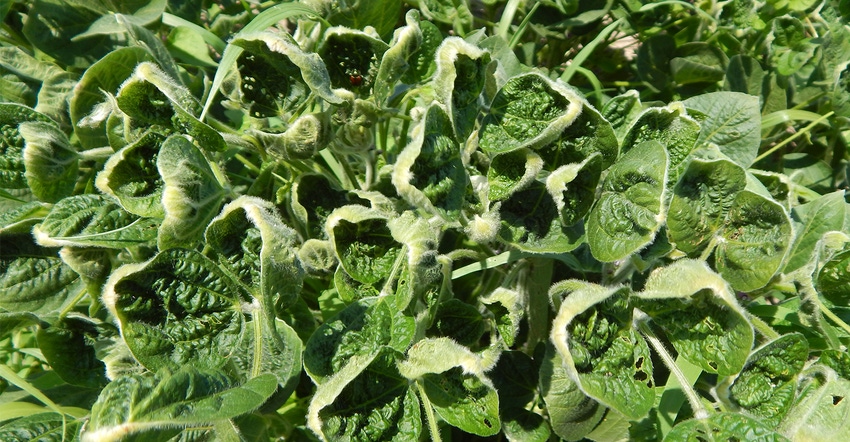
This is the first year dicamba herbicides were approved for use on dicamba-tolerant soybeans. Arkansas, Tennessee and the bootheel of Missouri experienced serious problems in 2016, when many growers didn’t wait for approval and used older, off-label products. Even with the new, approved products, complaints in Arkansas and Missouri reached high enough levels by early July to cause officials to issue stop-sale orders.
The situation as of mid-July was calmer in other states, including Indiana. There have been complaints, and state officials are working on restricted-use rules for 2018, but there’s no move to prevent the use of dicamba.
Banner year
“It looks like this will be a banner year for drift and herbicide injury complaints in Indiana,” says Dave Scott, pesticide administrator with the Office of the Indiana State Chemist. “We’ve logged complaints on many products besides dicamba.”
As of July 12, 46 dicamba complaints were under investigation, Scott says. Total number of herbicide complaints stood at 140.
The highest number of drift complaints received in Indiana from 2005 through 2016 was just over 100 in 2013. Already, 2017 complaints are approaching that high, even without dicamba complaints factored in.
“We’re still investigating these complaints and don’t foresee taking any action related to dicamba at this time,” Scott says. “However, we’re continuing pursuit of making dicamba products restricted-use chemicals in Indiana for 2018. A comment period is open on the proposed change, but very few comments have been filed.”
In Ohio, state officials report 78 ag pesticide complaints filed as of July 12. Only four involve dicamba, and one was a tank cleanout issue. No dicamba complaints were reported by Michigan officials as of July 12.
Perfect storm
So why are there so many drift and herbicide injury complaints in 2017? “We experienced the perfect storm of weather conditions to set us up for drift,” says Bill Johnson, Purdue University Extension weed control specialist. “Heavy rains compressed the opportunities for spraying. On days when it wasn’t raining, it was often windy. There just weren’t lots of opportunities when you could get across fields when it wasn’t windier than we like for spraying.”
Other product applications that resulted in drift complaints filed with OISC or plant samples being sent to the Purdue Plant and Pest Diagnostic Laboratory this year include glyphosate and saflufenacil (Sharpen), Johnson notes. He’s not discounting the importance of paying attention to situations involving dicamba, however.
“One reason we may not be getting as many complaints here is because Indiana farmers have applied dicamba in corn for a long time,” he says. “They’re used to puckering in nearby soybeans, so they may not see it as a big deal.
“Another reason is timing. Our crop is three to four weeks behind the Midsouth, so we may not have had enough time yet to allow data to flow into our offices.”
Johnson, like his counterparts elsewhere, is concerned about whether companies oversold farmers on the idea that the new formulations would not move off-target.
“I’m very much in favor of making it a restricted-use pesticide,” he says. “That will make sales easier to track, and will help when investigating possible future complaints.”
About the Author(s)
You May Also Like




